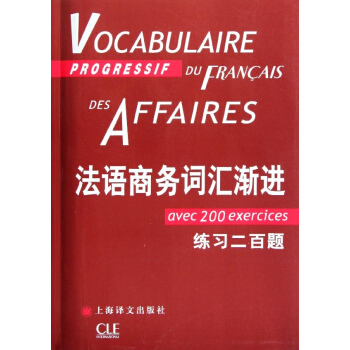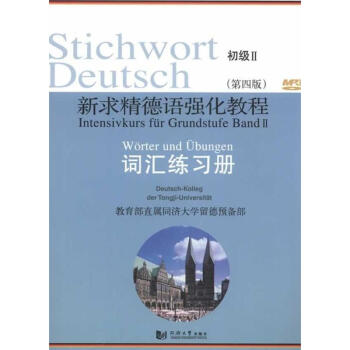

具体描述
编辑推荐
适读人群 :广大读者经典延续、 畅销多年, 英语学习、高考必备 ,有了这样一本参考书,将使学生的英语学习成绩大为提高。
内容简介
《新版英语小题库》丛书分初中4册、高中4册。目的是通过对学生的有效指导和训练,逐步提高学生的英语水平。本书是此套丛书中的一本。
本书是从“Chapter I 单项听力练习” “Chapter II 语篇听力练习”到“ Chapter III 综合听力测试卷”,由简到繁,由易到难,从各种不同的对话场景和文章内容指导学生逐步掌握听力测试的答题技巧。题库通过40个篇章360道题目的练习和训练,达到有效提高学生英语听力测试能力的目的。最后附有的听力文本和参考答案,起到为学生释疑解惑的作用。
本书供高中学生使用,也可供广大英语爱好者和教师参考使用。
作者简介
朱震一,资深英语教学专家,特级教师,上海市教育学会外语专业委员会理事。主持上海市徐汇区“朱震一名师工作室”。在闻名全国的上海中学执教三十余载,积累了丰富的英语教学经验,并著书60多本,达700余万字。曾公派澳大利亚昆士兰州从事教学,出访过美国、加拿大、瑞士、德国、法国、俄罗斯等30多个国家。精彩书评
案头这样一册实用有益的参考书,就像一位良师,将使你的学习大为改观。——上海深资英语教学专家、特级教师 陈锡麟
目录
Chapter Ⅰ单项对话听力练习1我们平时做听力练习时,先听一遍录音,然后直接对答案,会发现有的题目做对,有的题目做错。对好了答案再听第二遍,分析为什么听第一遍的时候会有错?是有生词?还是有不懂的习惯用语?是听不清录音里的讲话,还是听清楚了录音仍然不懂?是词汇问题?还是语法问题?听对话练习的时候应该注意些什么?对于不同场景的对话,应该掌握的方法是什么?
Chapter Ⅱ语篇听力练习12
语篇听力练习从文章的长度上来说,要比前面的对话听力练习要长吗?难度有所增加吗?考试的时候一篇短文通常会读几遍?一篇短文中哪些内容是出题的老师要出的事例?哪些内容是老师容易出的素材?哪些内容是老师要你理解的关键?时间、地点、人物、年份、数字、事件发生的原因及后果?对于语篇听力,应该掌握的方法是什么?
Chapter Ⅲ综合听力测试卷19
我们在做综合听力题目时会有一个共同的体会,就是只有你先看了题目后再听录音,效果会好一点。一个题目和下一个题目的时间间隔是几秒?有时间来看一些长的选项吗?做听力题目一定要集中思想吗?做综合听力测试卷应该掌握的方法是什么?
听力文本和参考答案50
精彩书摘
Chapter Ⅰ单项对话听力练习
听力测试是目前高考的重要部分。我们都知道,“学习英语的目的是为了用英语”。怎样算是用英语呢?就是能用英语来交流。怎样才算能交流呢?很简单: 看得懂英语,听得懂英语,讲得出英语,写得出英语。只有听懂了别人讲的英语才能与他人交流。所以目前中考听力和高考听力的比重都很高。如果你有一个讲英语和听英语的环境,日积月累听力会自然提高。但是目前我们都没有这个条件,那就需要我们来“练习听力”。本书就是为“练习听力”的目的而设计的。根据高考听力的具体要求,我们分三步走: 第一步是单项对话听力练习;第二步是语篇听力练习;第三步是综合听力练习。
我们平时做听力练习时,先听一遍录音,然后直接对答案。会发现有的题目做对,有的题目做错。对好了答案再听第二遍,分析为什么第一遍听的时候会有错?是有生词,还是有不懂的习惯用语?是听不清录音里的讲话,还是听清楚了录音仍然不懂?是词汇问题,还是语法问题?第二遍听的时候要看着后面的“录音材料”听,把里面的方方面面都弄得很清楚,包括生词、习惯用语和语法。然后再听第三遍。这次听,完全不看任何东西,也不要有“听完做练习”的意识,就当听新闻、听故事一样。这样反复三遍听了以后,才可以接下来听下一个单元。
我们也知道,语言的学习是个积累的过程,听力的提高也不例外。一旦听力提高了,水平也不容易退下去。所以要提高听力,要花很大的力气。尤其是对话的听力题目在考试时只读一遍,所以听对话还是有一定难度的。当然,平时如果有机会能看看英语原版电影,和同学、老师或外教能讲讲英语,交流交流也是提高听力不错的方式。
单项对话听力练习一: 场景
Directions: In this section, you will hear ten short conversations between two speakers. At the end of each conversation, a question will be asked about what was said. The conversations and the questions will be spoken only once. After you hear a conversation and the question about it, read the four possible answers on your paper, and decide which one is the best answer to the question you have heard.
1.
A. In the supermarket.B. In a shop.
C. In the museum.D. In the theatre.
2. A. At a cinema.B. At an airport.
C. At a railway station.D. At a stadium.
3. A. In a hospital.B. In a school.
C. In a hotel.D. In a police station.
4. A. A bank.B. A hospital.
C. A school.D. A store.
5. A. At home.B. At a studio.
C. At a concert.D. At a theatre.
6. A. In a book store.B. In a library.
C. In a museum.D. In a supermarket.
7. A. At a fast food restaurant.B. At a big hotel.
C. At a Chinese restaurant.D. At a bar.
8. A. In a nursery.B. In the hospital.
C. In a library.D. At a police station.
9. A. At a bus stop.B. At the post office.
C. In an Indian shop.D. At the ticket agency.
10. A. At a car shop.B. In a parking lot.
C. At a garage.D. In a car showroom.
单项对话听力练习二: 数字与计算
Directions: In this section, you will hear ten short conversations between two speakers. At the end of each conversation, a question will be asked about what was said. The conversations and the questions will be spoken only once. After you hear a conversation and the question about it, read the four possible answers on your paper, and decide which one is the best answer to the question you have heard.
1. A. Two.B. Three.
C. Four.D. Nine.
2. A. June 8th. B. July 8th. C. June 2nd. D. July 2nd.
3. A. At 1:00 p.m.B. At 1:30 p.m.
C. At 2:00 p.m.D. At 2:30 p.m.
4. A. $240.B. $250.
C. $290.D. $200.
5. A. 6 p.m.B. 11 p.m.
C. 5 p.m.D. 9 p.m.
6. A. In July.B. In August.
C. In January.D. In October.
7. A. 200.B. 400.
C. 600.D. 230.
8. A. 7:00.B. 7:10.
C. 9:00.D. 9:10.
9. A. Nine.B. Three.
C. Six.D. Twelve.
10. A. 10:55.
B. 10:35.
C. 10:25.D. 11:30.
单项对话听力练习三: 职业
Directions: In this section, you will hear ten short conversations between two speakers. At the end of each conversation, a question will be asked about what was said. The conversations and the questions will be spoken only once. After you hear a conversation and the question about it, read the four possible answers on your paper, and decide which one is the best answer to the question you have heard.
1. A. A chemist.B. A salesman.
C. A librarian.D. A doctor.
2. A. A supermarket cashier.B. A bus conductor.
C. A petrol station worker.D. A post office clerk.
3. A. A receptionist.B. A travel agent.
C. A journalist.D. An office manager.
4. A. A car dealer.B. A doctor.
C. A car mechanic.D. A shop assistant.
5. A. A teacher.B. A student.
C. A cleaner.D. A journalist.
6. A. The man.B. The secretary.
C. The woman.D. The treasurer.
7. A. A hairdresser.B. A dentist.
C. A fashion designer.D. A tailor.
8. A. A shop assistant.B. A librarian.
C. A salesman.D. A technician.
9. A. A lawyer.B. A police officer.
C. A car driver.D. A judge.
10. A. A repairman.B. A lawyer.
C. A policeman.D. A tailor.
单项对话听力练习四: 人物关系
Directions: In this section, you will hear ten short conversations between two speakers. At the end of each conversation, a question will be asked about what was said. The conversations and the questions will be spoken only once. After you hear a conversation and the question about it, read the four possible answers on your paper, and decide which one is the best answer to the question you have heard.
1. A. Classmates.B. Student and teacher.
C. Parent and child.D. Colleagues.
2. A. Interviewer and interviewee.B. Teacher and student.
C. Doctor and nurse.D. Boss and secretary.
3. A. Guest and receptionist.B. Passenger and air hostess.
C. Customer and shop assistant.D. Patient and nurse.
4. A. Teacher and student.B. Customer and shop assistant.
C. Player and coach.D. Father and child.
5. A. Doctor and patient.B. Waitress and diner.
C. Student and teacher.D. Husband and wife.
6. A. Husband and wife.B. Guide and tourist.
C. Teacher and student.D. Clerk and customer.
7. A. Student and teacher.B. Customer and sales assistant.
C. Wife and husband.D. Patient and doctor.
8. A. Patient and doctor.B. School mates.
C. Parent and Teacher.D. Colleagues.
9. A. Father and son.B. Patient and doctor.
C. Writer and Translator.D. Diner and waitress.
10. A. Boss and secretary.B. Interviewer and interviewee.
C. Teacher and student.D. Director and movie star.
Chapter Ⅱ
语篇听力练习
“语篇听力练习”从文章的长度上来说,要比前面的“对话听力练习”要长,且难度有所增加。但是在考试的时候一篇短文通常会读两遍,所以总的来说难度比“对话练习”要小。根据第一章的听力方法: 一个短文听三遍,再听第二个短文。一般说来,短文听力都会有点生词和习惯用语,请大家通过查词典来解决。这里要着重说一说第二遍听语篇的时候,要对照着后面的“听力原文”一起听。你要分析,在这篇短文中哪些内容是出题的老师要出的事例,哪些内容是老师容易出的素材,哪些内容是老师要你理解的关键,如“时间、地点、人物、年份、数字、事件发生的原因及其后果”,等等。这就让你知道在听语篇时要注意的地方。听久了,你就会知道哪些内容是老师会考查你的,哪些内容是一定会出现在考题里的。在平时练习时不妨做点笔记,记点关键词。当然,在做听力练习时应该在你精力充沛时做,一天劳累下来再做听力,效果不会理想。
Directions: In this section, you will hear 20 short passages, and you will be asked three questions on each of the passages. The passages will be read twice, but the questions will be spoken only once. When you hear a question, read the four possible answers on your paper and decide which one would be the best answer to the question you have heard.
Passage 1
1.
A. 19.B. 20.
C. 80.D. 90.
2. A. To raise money for school affairs.
B. To do some research on nutrition.
C. To develop students’ practical skills.
D. To supply teachers with drinks.
3. A. A best selling coffee.
B. A special educational program.
C. Government support for schools.
D. A new type of teacher student relationship.
Passage 2
1. A. To know when to bring them inside.
B. To keep them from eating bad food.
C. To help them find shelters.
D. To keep them company.
2. A. They may run short of clean water.
B. They may dig deep holes for fun.
C. They may dirty the snow nearby.
D. They may get lost in the wild.
3. A. To solve a problem.
B. To give practical advice.
C. To tell an interesting story.
D. To present a research result.
Passage 3
1. A. He got a baby brother.B. He got a Christmas gift.
C. He became four years old.D. He received a doll.
2. A. Excitement.B. Happiness.
C. Sadness.D. Disappointment.
3. A. A sad Christmas day.B. Life with a lovely baby.
C. A special Christmas gift.D. Memories of a happy family.
Passage 4
1. A. A hearing aid can help you to get better view.
B. A hearing aid is an electronic device.
C. A hearing aid is a kind of sound wave.
D. A hearing aid is actually a computer.
2. A. To get enough money.
B. To understand how it works.
C. To have a medical examination.
D. To prepare some batteries.
3. A. It makes the sounds clear.
B. It protects the loud sounds.
C. It keeps the sounds in a normal volume.
D. It increase the volume of all sounds.
……
前言/序言
从大学毕业,到上海市上海中学教英语,一教就是34年。在这34年中,我每天都在想同一个问题:怎样教英语,同学们才会懂得快,才会用得活,才会记得长久?英语学习,从理论上来说,是个技术活。有人认为:只要熟了,就能生巧。其实并不然,对我们来说,英语是第二语言。我们在学校学习英语,每个礼拜也只有几个小时。我们没有办法“沉浸在英语的语言环境中”。这就需要老师来“讲道理”“搭结构”,需要同学来“练口语”“做习题”“多阅读”“勤写作”。
当你把“学习英语是为了使用英语”这个道理记住了,教书和读书会变得很有意义。英语,老师一个人并不稀奇,要学生也懂才有意义;老师一个人会讲并不稀奇,要学生也会讲才有意义;老师一个人会写并不稀奇,要学生也会写才有意义。所以,对一个老师来说,要“教会”别人不是一件容易的事。道理应该怎样讲?结构应该怎样搭?口语应该怎样练?习题应该怎样做?文章应该怎样读?作文应该怎样写?但凡听过我课的同学会觉得英语学习是件快乐的事,但凡读过我写的书的同学会认为时间没有白费。把我34年的教学心得写下来,算是一个英语特级教师的心愿。愿大家在英语学习中少走点弯路,多得些体会。
感谢沪上英语教学大师陈锡麟先生为本丛书作审阅和修改。
感谢在上海中学任教的英国文教专家Mr. Nuno Lopes和Mr. Roy Grimes,美国文教专家 Ms. Amy Hutchinson和Ms. Erin McGinley对本丛书提供的宝贵见解。
愿本丛书为大家带来求知的进步和喜悦。
朱震一
2016年2月14日
用户评价
从内容上看,这本书的编排逻辑简直是教科书级别的。它不是简单地堆砌知识点,而是构建了一个循序渐进的学习路径。我花了点时间研究了一下它的目录结构,发现作者非常懂得如何引导学习者从基础概念入手,逐步过渡到复杂应用场景。这种结构上的严谨性,让我觉得即便是自学,也不会感到迷失方向。更重要的是,它似乎非常注重知识的“内在联系”,而不是零散的知识点罗列。我个人的学习习惯是被系统化的内容所吸引,这本书恰好满足了我的需求。它给我的感觉是,作者对整个学科的脉络有着非常深刻的理解,并将这种理解巧妙地转化为了清晰的教学框架。这种结构上的匠心,是这本书最大的价值所在,它让学习不再是一盘散沙,而是一个有章法的工程。
评分这本书的封面设计真是让人眼前一亮,那种简洁又不失活力的设计风格,一下子就抓住了我的眼球。我是在书店里偶然看到它的,第一印象就觉得它与其他教辅书不太一样。它没有那种传统教辅书的刻板和沉闷,反而有一种现代感,让我对里面的内容充满了好奇。拿到手里掂了掂分量,感觉内容肯定非常扎实,不会是那种虚头巴脑的凑数读物。我本来还在犹豫要不要买,毕竟市面上的英语学习资料太多了,但最终还是被它的颜值和那股子“有料”的气质给打动了。我特别留意了一下它的排版,字迹清晰,布局合理,这一点对于长时间阅读来说太重要了,不会让人感到阅读疲劳,这点设计上的用心值得称赞。这本书的外观给我传递了一个明确的信号:它不仅仅是一本工具书,更是一本值得细细品味的阅读材料。希望它能像它的外表一样,给我的英语学习带来新的启发和动力。
评分这本书的整体风格非常贴近当代学习者的使用习惯,这一点让我感到惊喜。它没有那种高高在上、不食人间烟火的理论说教,而是采用了一种更具亲和力和实战性的口吻进行阐述。我特别关注到一些知识点的讲解方式,它们往往会结合当下社会的热点话题或者常见的语言误区来展开,这种“接地气”的讲解方式,大大降低了理解的门槛,也让学习过程变得更加有趣。我感觉作者仿佛是一位经验丰富的“过来人”,他知道我们在学习中会遇到哪些困难,并提前准备好了解决方案。这种亦师亦友的交流感,是我在很多其他教材中未能找到的。好的教材不仅要教知识,更要会“教人如何学习”,这本书显然在这方面做得非常出色。
评分我不得不说,这本书的装帧质量确实超乎我的预期。纸张的质感摸上去很舒服,不是那种粗糙廉价的纸张,油墨印刷也很均匀,即便是最细小的字母和图示都清晰可见,这对于需要反复翻阅和做标记的学习资料来说简直是福音。翻开内页,那种墨香混合着纸张特有的清爽气息,让我立刻进入了学习状态。我特别喜欢它内页的用色,虽然主体是黑白为主,但关键信息的标注和分割线处理得恰到好处,既能突出重点,又不会分散注意力。很多教辅书在这方面做得不好,颜色太多太杂,反而让人眼花缭乱,而这本书显然在这方面下了大功夫,做到了视觉上的平衡与和谐。这种对细节的执着,往往体现了编者对读者的尊重,让我感觉自己得到的不仅仅是一本书,更是一份精心打磨的作品。这种高品质的实体书体验,是在电子阅读器上无法替代的享受。
评分我非常欣赏这本书在细节处理上展现出的专业深度。比如,一些技术性的术语和表达方式,它不仅给出了标准答案,还会深入分析不同语境下的细微差别,这种层次感非常到位。这说明编写团队绝对不是简单的知识搬运工,而是真正进行了深入的研究和提炼。我特别期待翻阅到它对那些“边缘知识点”的处理,通常一个学习者的水平瓶颈往往就卡在这些不容易被注意到的细节上。如果这本书能在这方面提供独到且精辟的见解,那么它的价值就不仅仅是提高分数那么简单了,它会真正帮助学习者建立起一个全面而精确的知识体系。这种对知识的敬畏和对准确性的追求,是判断一本优秀教辅与平庸之作的关键。
相关图书
本站所有内容均为互联网搜索引擎提供的公开搜索信息,本站不存储任何数据与内容,任何内容与数据均与本站无关,如有需要请联系相关搜索引擎包括但不限于百度,google,bing,sogou 等
© 2025 book.idnshop.cc All Rights Reserved. 静思书屋 版权所有

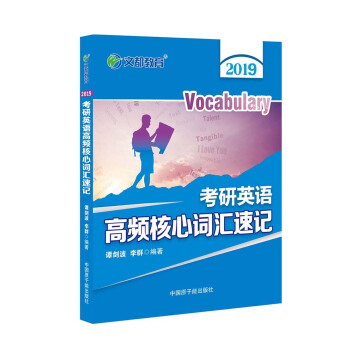
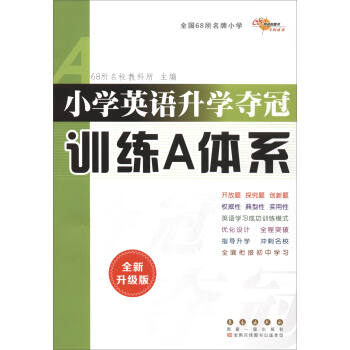
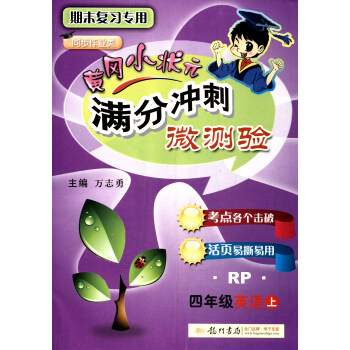

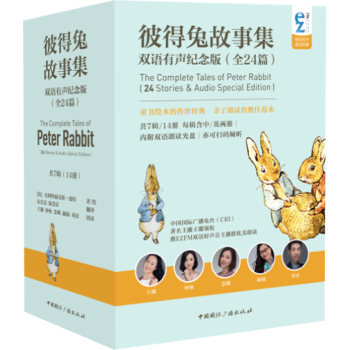

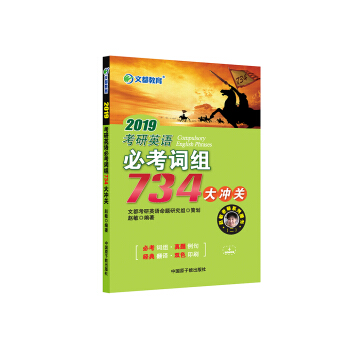
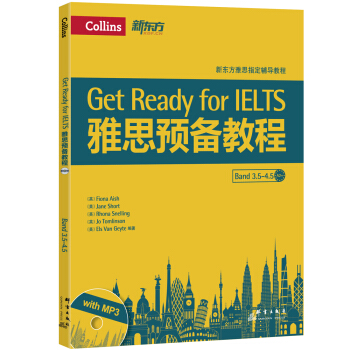
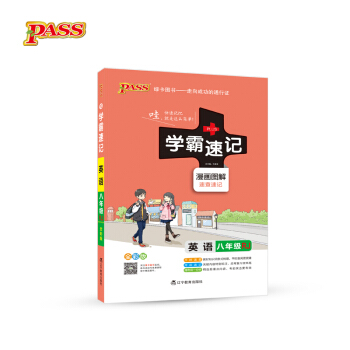
![理解与表达:汉英翻译案例讲评 [Meaning and Expression:Annotated Texts in Chinese-English Translation] pdf epub mobi 电子书 下载](https://pic.tinynews.org/12207292/594250a3Na30a7f55.jpg)
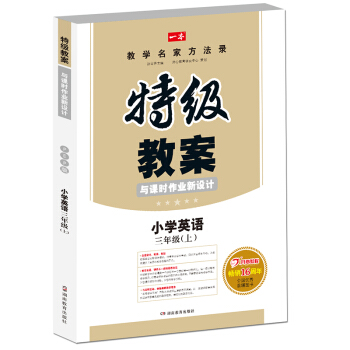
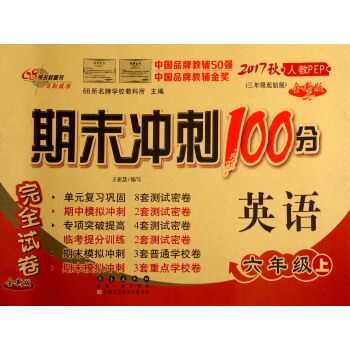
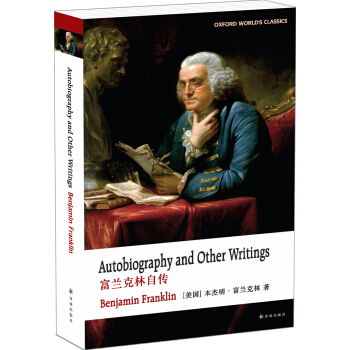
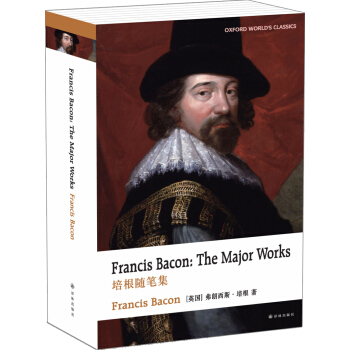
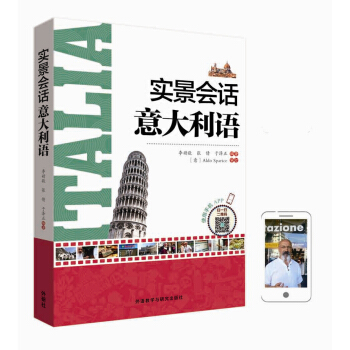
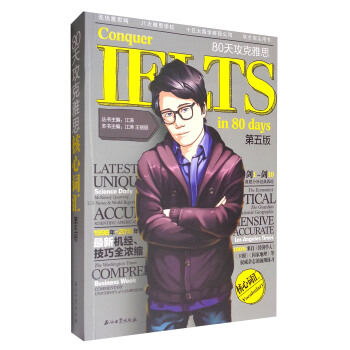
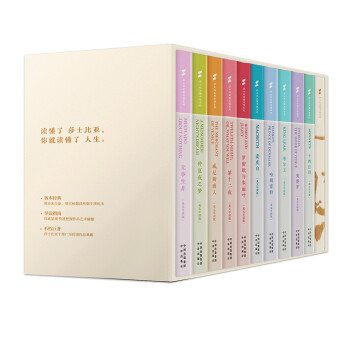
![茶花女(买中文版全译本赠英文原版 套装共2册) [The lady of the camellias] pdf epub mobi 电子书 下载](https://pic.tinynews.org/12222446/59683103N19f05c38.jpg)
